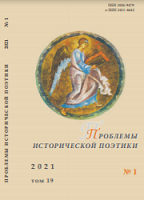Петр I в преданиях XVIII–XX вв.: сюжеты, мотивы, проблема жанра
Peter the Great in the Folklore Legends of the 19th - Early 20th Centuries: Plots, Motifs, Genre Problem
Author(s): Olga Vladimirovna ZakharovaSubject(s): Customs / Folklore, Studies of Literature, Recent History (1900 till today), Russian Literature, 18th Century, 19th Century
Published by: Петрозаводский государственный университет
Keywords: Peter the Great; plot; motif; genre; folklore history; fairy tale; anecdote; legend;
Summary/Abstract: Peter the Great is one of the most popular characters in the folk prose of the Russian North. His sojourns in thinly populated and inaccessible places had left a noticeable mark in the people’s memory. The first tales about him were written in the mid-18th century. Researchers define the genre of these works in different ways. They are classified as folklore, legends, fairy tales, anecdotes, stories about royal favors. The main motifs they contain are release from work, communication with ordinary people, treats, presenting with a caftan, coat, cloth, money, infliction and compensation for losses. They often contain the motif of Peter the Great’s recognition of the enemy’s superiority over himself in strength, ingenuity, resourcefulness, navigation, carpentry, making bast shoes, etc. As a rule, the plots of folklore stories are a convoluted mix of motifs from works of different genres. Some of them have magical significance: a miraculous dream, signs, the fulfillment of a prediction, the uncovering of relics, magical punishment, the petrification of Peter the Great in the monument (The Bronze Horseman), etc. A feature characteristic of folklore history is the multiplicity and ambiguity of their genre manifestations. Oral stories about Peter the Great are historically unreliable: the narrator knows a fact in the most general sense, and it is subsequently comprehended in accordance with popular ideas about power. The Tsar is recognizable as a historical person, but he acts in the genre paradigm of a cultural hero. Historical legends about Peter the Great characterize the formation and development of the folk poetic myth of a just tsar who values the common people, lives in the interests of the state, and is concerned about the future of Russia.
Journal: Проблемы исторической поэтики
- Issue Year: 19/2021
- Issue No: 1
- Page Range: 75-87
- Page Count: 13
- Language: Russian

